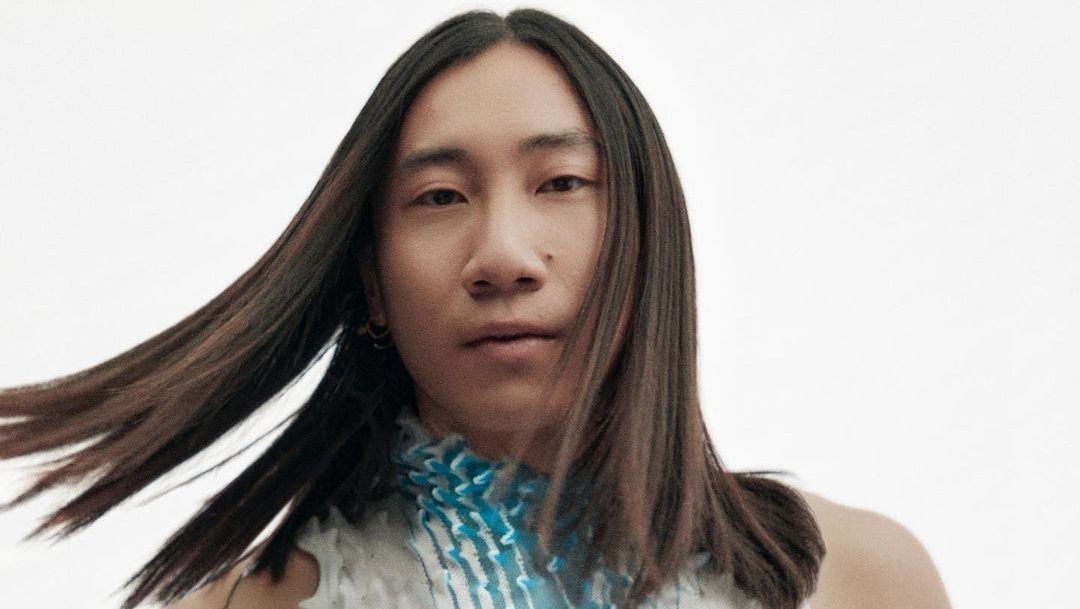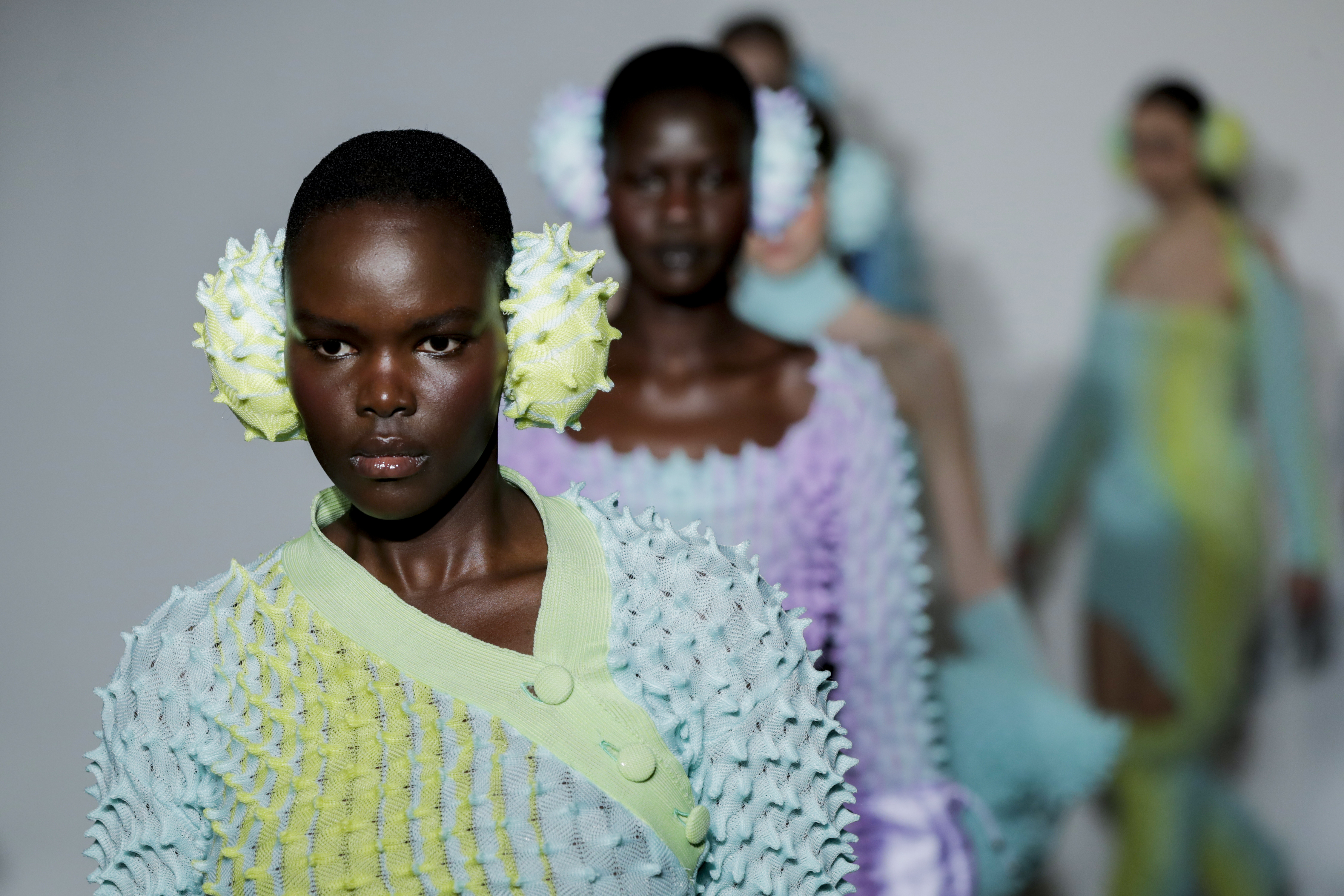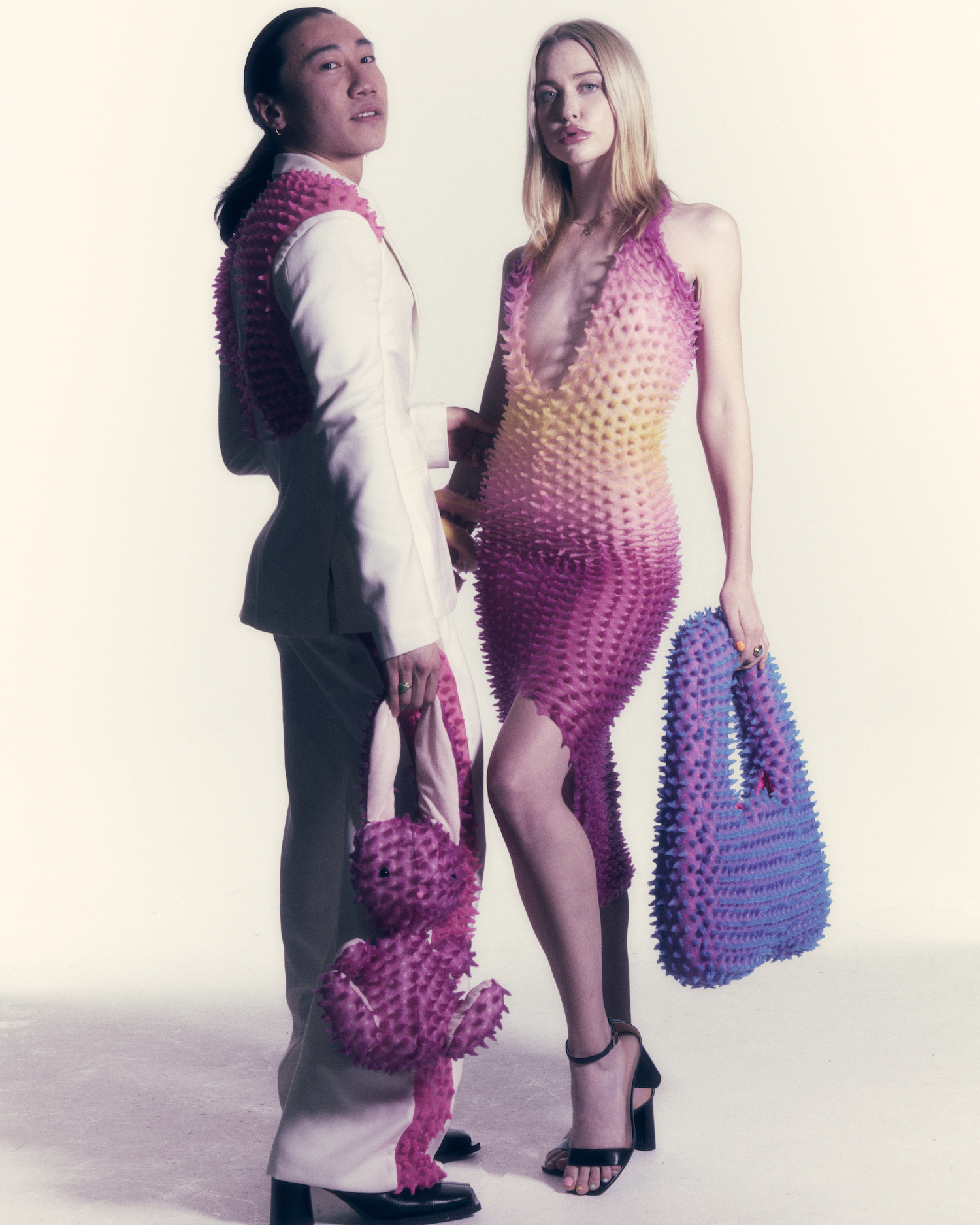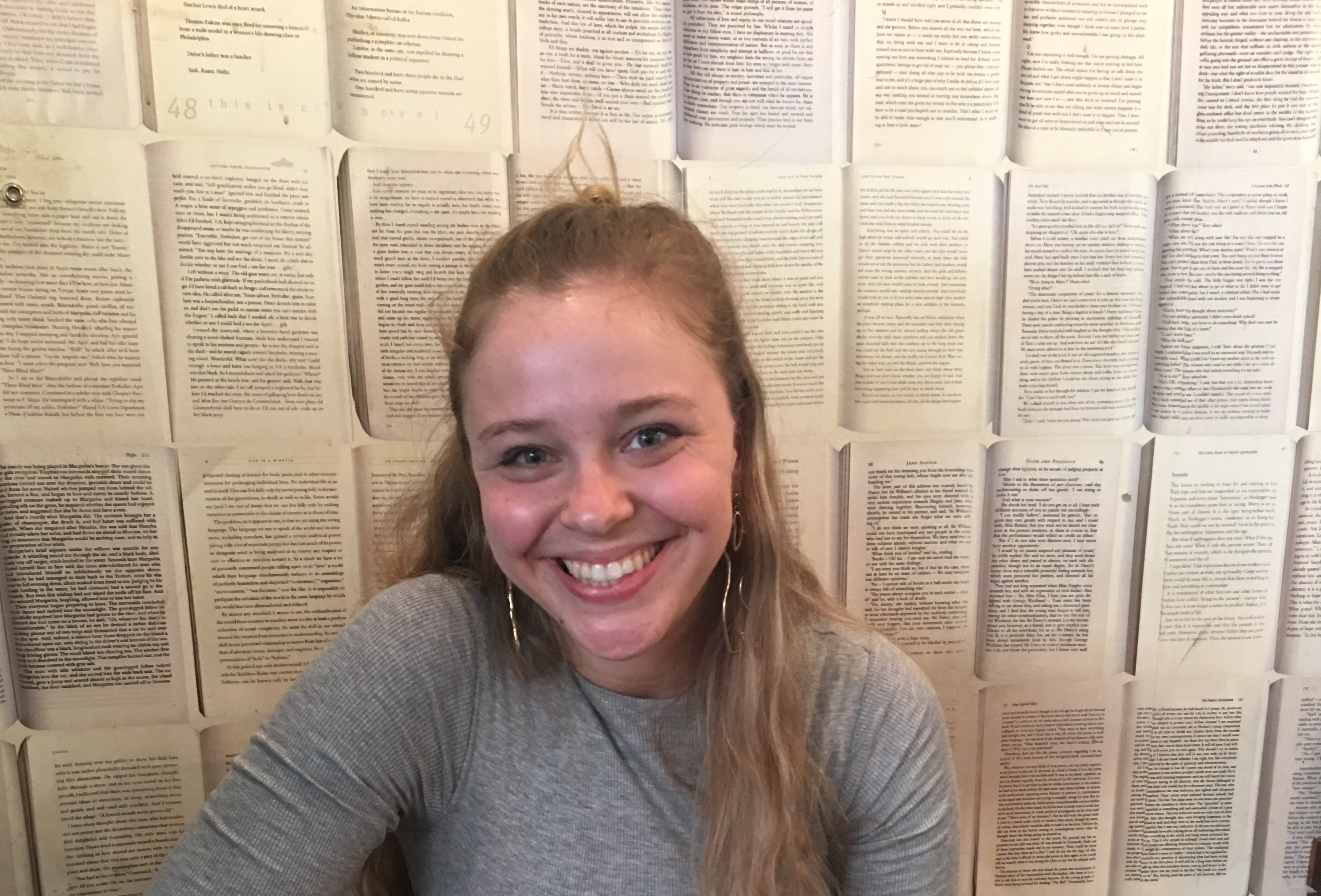

At just 25 years old, Chinese-American knitwear designer Chet Lo already knows exactly who he is. More importantly, so do his legions of fans. The London-based, New York native founded his eponymous label at the start of the COVID-19 pandemic, after having interned at venerable fashion houses like Proenza Schouler and Maison Margiela. Lo already counts A-listers such as Dua Lipa, Doja Cat, Chloe Cherry, and Christina Aguilera as fans of his sultry silhouettes and signature spike knit fabrications.
Set to stir up London Fashion Week for a third season this September, the Central Saint Martins alum credits creative talent incubator Fashion East with his frenetic and continuous rise. In the month of May alone, Lo was featured in the Forbes 30 Under 30 list, and participated in Absolut’s inaugural #BornToMix project, along with his appearance in the British Fashion Council’s New Gen initiative, supporting emerging British-based designers.
When describing the quintessential Chet Lo client, the designer tells GRAZIA Gazette: Hamptons, “They’re super unafraid of how people look at them on the street.” Wishing to instill an unabashed strength and empowerment through his creations, Lo finds great reward in knitting a piece for someone who really, really wants it. “I love the craft of what I do,” says Lo.
Love of the craft is ultimately what stirred Lo to confront an issue many up-and-coming designers face. After a large fast fashion company allegedly duplicated Lo’s singular designs, he took to Instagram to say, “As a small brand and queer POC independent designer, I have worked incredibly hard to produce something that was based off my heritage and facilitated something I felt I had to say in the industry. I have always based my designs around my own personal experiences, and I feel that it can be seen in my work. These fast fashion companies consistently replicate works of smaller and more creative designers, but at the end of the day, authenticity, originality, and creativity can never be reproduced.”

In a new interview with GRAZIA USA, Chet Lo breaks down his retro-futuristic design influences, what’s next for the brand, and why standing up to fast fashion is worth the fight.
GRAZIA: Can you tell me a little bit about your journey as a designer?
Chet Lo: I was born and raised in New York. My family is originally from Hong Kong, so growing up entailed learning how to navigate an Asian-American kind of culture. After that, I graduated high school, went to Central Saint Martins and moved to London, where I found my voice, found who I was as a person, and fell in love with myself. Then, I based a lot of my designs around who I was, my heritage, and how I came to be the person I am today.
After graduating during the pandemic, I couldn’t find a job. Out of necessity, I had to launch my own brand because I needed to pay rent. Things took off from there. It garnered a lot of attention online, which really facilitated growing the brand. Then we had some celebrity placements, which was just absolutely amazing. Seeing [my designs] on people whose music I’ve listening to for years was insane. After that whole shebang, we started working with an incubator in London called Fashion East. And they really helped me grow as a company and as a person. Now, we’re having our show in September, all over again. We’ve been lucky enough to be stocked at Selfridges, SSENSE, and H. Lorenzo in L.A.
G: You’ve mentioned your Asian heritage in design influence — can you tell me a little about that?
Lo: I think it’s just referencing the way that I grew up. A lot of the anime that I watched was super futuristic, super alienist, and that kind of energy. All of the anime was from back in the ‘80s or back in the ‘60s and I wondered how would they know what the future looked like? This retro-futuristic juxtaposition of themes like aliens, bright colors and flying cars! I channeled that energy into a weird, quirky, different kind of textured knit. I envisioned Ghost in the Shell. Imagine erupting out of a vat of weird acid and your skin just starts bubbling. That’s where I get a lot of the inspiration from. We’re not going to do painted Chinese dragons, you know? I think a lot of people think, ‘Oh, you’re Asian! Where’s the white porcelain?’ That’s not really where my inspiration comes from. I very much love that, but that’s not the avenue that I went down.

G: How would you describe your ideal client?
Lo: My ideal woman or person is one that is really unafraid — really fun, flirty, sexy. They’re super unafraid of how people look at them on the street. That’s the vibe. I think a lot of time, the way I grew up, the way I present myself, I would be walking down the streets, and often times, people would stare at me, people would yell things at me, and I think you get a hard skin from that. Then, you have a moment that’s about self-love, and you’re like, ‘You know what? I’m a bad b***h and I get do whatever I want. I wear whatever I want. I don’t care how colorful, or how much nipple you’re seeing. It doesn’t matter.’ That’s the kind of the person I want to be dressing and that’s the kind of person that I want — for them to slip on a dress and to feel empowered, and strong, but also feel so sensual and super sexy with a fun, bubbly energy.
G: What’s next for you and the brand?
Lo: We have a lot of things coming. The last two seasons, we’ve gotten down our brand identity. So now, it’s about trying new and different things, and trying to tell more of the story of what I want to say, and the kind of techniques I want to do, and really grow from there. I want to offer a lot of different options, because a lot of times, people think that the garments are very party-wear. And they’re not wrong. It’s very slutty and fun. But I want to offer garments that people can wear to the grocery store, people can wear to the airport. Offering different variations, as well as branching off into the world of design, and not just fashion. I want to see where things can take off from there. I think fashion can be quite limiting, and I feel like I have more to give.
G: A high-profile fast fashion company recently recreated your designs, can you tell me about that?
Lo: All I can say is, it’s happened several times in the past, and I never really said anything, just because a lot of times, when it comes from another brand, I’ll be like, you know what? Respect. I understand. I didn’t invent this technique. I found it, very luckily, and I was able to adapt it into my own way. And then, when you see all of the hard work that you’ve done, and all of the development that you’ve done, and then seeing it sold for 30 or 50 euros. You have to ask yourself, ‘Okay, I am producing. I know exactly how much it costs, and you’re selling it for such a low price point. How is that ethically made?’
It wasn’t like an ego thing, of like, ‘I invented this, how dare you steal from me?!’ It’s just the idea that I have a platform, and I have people that can listen to what I’m trying to say, and I think it’s about doing whatever you can to stop the next person that can be hurt from it. Because there’s a lot more creatives out there, who have beautiful and brilliant ideas, that can be easily stolen. It’s about making sure, trying your hardest, not to let that happen again to somebody else.














